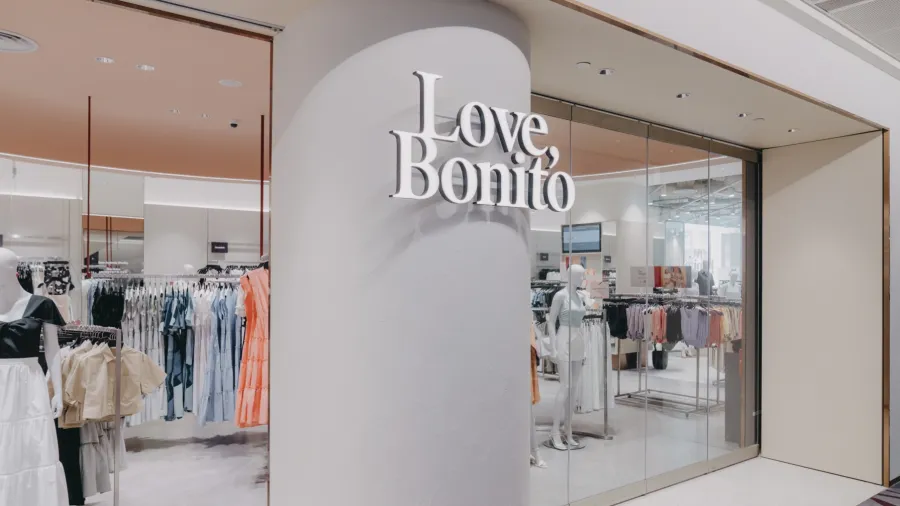
How Love, Bonito develops actionable insights in fashion
CEO of Love, Bonito, Dione Song, revealed the brand’s data strategy that led to an 8% increase in its second purchase rate.
In the past two years, Love, Bonito has been accurately forecasting the demands of its customers, with a monthly mean average percentage error of less than 10%. Because of this accuracy, the brand is able to prevent overproducing items and cut out underperforming products. This was all thanks to its established data team and infrastructure.
Love, Bonito’s in-house data team and infrastructure were established in 2019. It initially aimed to make analytics scalable and build a data culture within the company.
Now, its data team focuses on translating actionable insights from data, building automation and decision modelling to drive growth and efficiency across the organisation.
“This allows us to identify and recreate winning designs that customers love and at the same time, improve other designs based on customers’ likes and preferences. There are also plans to use data science and AI to enhance customer experience based on customers’ psychographics and shopping habits online and in-store,” CEO Dione Song told Retail Asia.
“It’s critical because it helps us make better decisions. Data is knit into every part of our business from understanding customer preferences and changing trends to driving efficiency in our inventory decisions and identifying new opportunities for our business,” Vice President of Data and Growth, Jane Leong added.
Data Strategy
Love, Bonito uses both first-party data which include transaction, behavioural, and survey data collected from their platforms, and third-party data or industry and competitor research. It keeps track of over 100 product attributes per SKU and gathers information and feedback from customers.
The data team looks at various information which includes product attributes of popular designs, ways to maximise stock levels at each store and decisions to select what products they should offer and how and when they should be released.
The company’s in-house design trackers, meanwhile, work with the designers to identify winning designs and gain insights from under-performers.
“In the long run, we turn customer insights into actionable plans that drive the design process,” Leong said, adding that customer lifetime value over customer acquisition cost ratio increased seven times.
Trends and Challenges
To date, Love, Bonito has 16 physical stores in Singapore, Hong Kong, Malaysia, Cambodia, and Indonesia and also ships to 20 countries worldwide.
Even if the company started as an e-commerce business in 2010, it was still not spared from the supply disruption caused by the pandemic. Song, however, said that this presented an opportunity for Love, Bonito to recalibrate their omnichannel efforts to emphasise online versus in-store activations due to uncertainties in movement.
“Now, we’ve pivoted to designing home and comfort wear, such as our Staples (officially named The Staples) and Loungewear lines. We also started to incorporate workwear into our assortment a few months ago as safety measures have eased and we see more customers adapting to clothes needed for the hybrid work-home environment,” Song said.
Song said that whilst it is important to have channels and touchpoints needed to reach customers, it is also vital to be as “channel-agnostic, customer-centric, and hyper-thoughtful as possible to go to where shoppers are,” noting that customers expect convenience and want connections and a sense of community.
It is also important for brands to have an “authentic and clear purpose, and value system” as customers have become more discerning, especially the millennials and Gen Zs.
Future Plans
Love, Bonito’s international markets have collectively seen triple digits year-on-year growth, especially “Hong Kong, the Philippines, and the US”, Song said.
She said they plan to supercharge their efforts in these key international markets due to their potential, adding that they plan to add physical stores in some of these new markets. They are also doubling down efforts in omnichannel markets Singapore, Malaysia and Indonesia.
Aside from these, Love, Bonito targets to expand their offerings and in October, it launched an activewear category. After acquiring an established Singapore-based women-led activewear brand, butter., Love, Bonito kickstarted its evolution into a well-rounded female ecosystem with its new sister brand – cheak.
Love, Bonito also uses data to serve its customers. Recently, they launched LBStylist, their first-ever virtual recommendation tool which customers can use to look for their styles through a 10-step survey on their individual preferences, body shapes, and skin undertones.
In the pipelines are also new initiatives for LBStylist which include new capabilities for improved style recommendations and potentially integrating new touch points such as its existing personalised shopping service, Book-A-Stylist.
“Essentially, by using data science and AI, we hope to integrate both online and in-store experiences to create a more well-rounded omnichannel strategy,” Leong shared.

















 Advertise
Advertise









